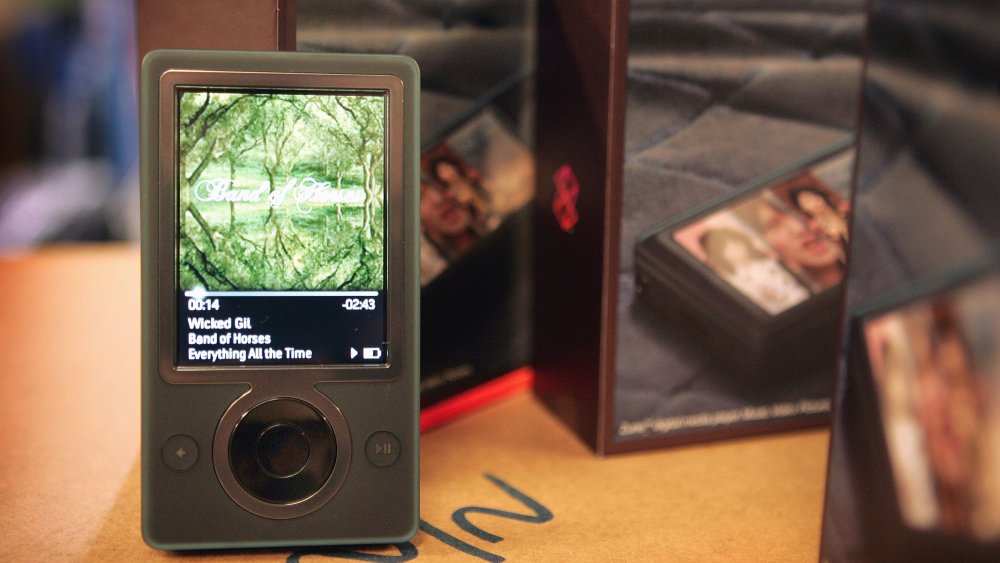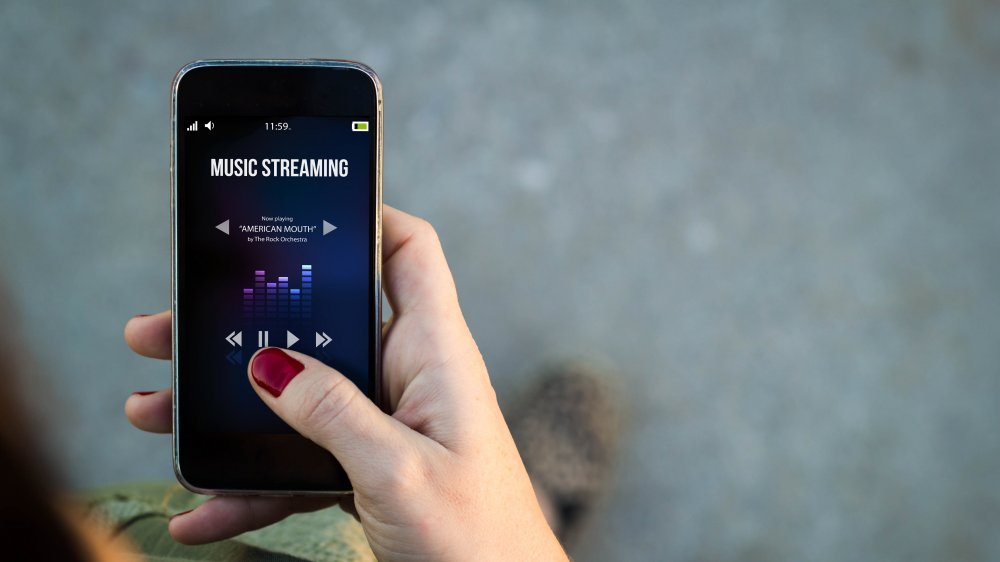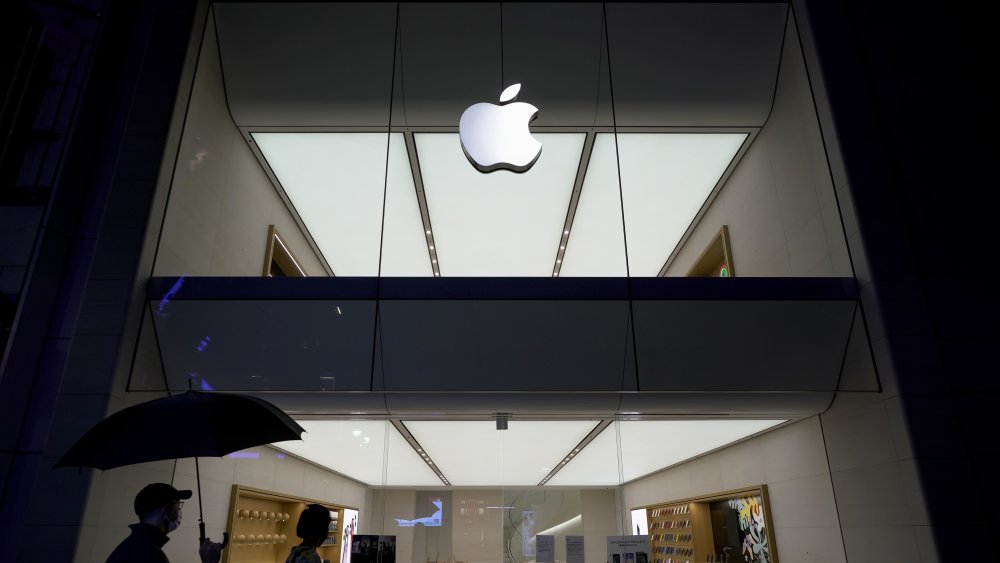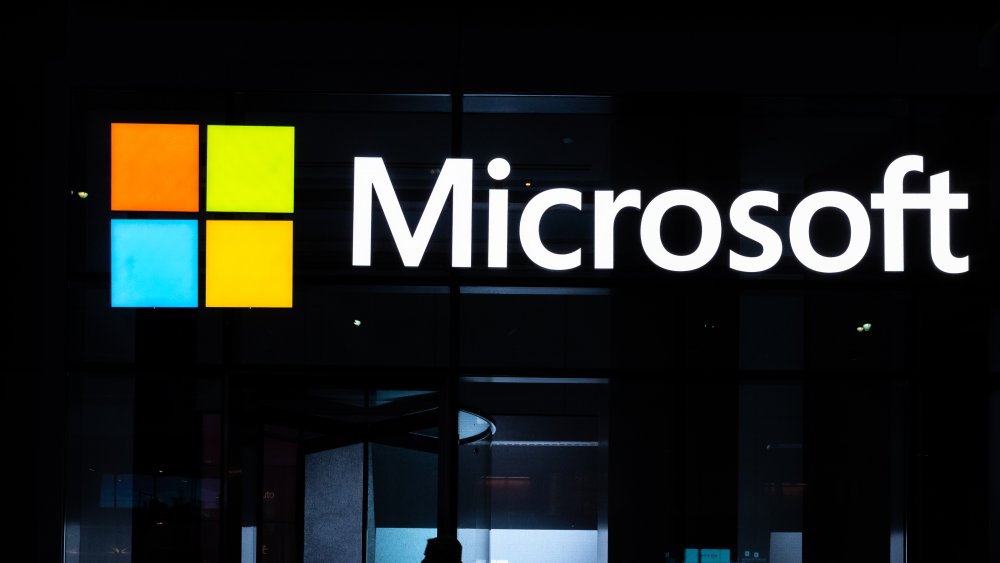The Real Reason Microsoft's Zune Was Such A Huge Failure
With the tagline "a thousand songs in your pocket", the historic 2001 launch of Apple's first generation iPod took the tech world by storm. Within five years, the company dominated the world of portable music players without any other big competitor in the market. In the meantime, longtime rival Microsoft took a laissez-faire approach to its portable music devices early on, leaving it up to third-party manufacturers — like Samsung, iRiver and Creative -– to use Windows software to create their own gadgets (it goes without saying that none of these devices had any real footing in the market).
But by 2006, while Apple quickly became known as an icon for its futuristic and trendy branding, challenger Microsoft teamed up with tech giant Toshiba to give the iPod a run for its money: enter Zune.
Technically speaking, Zune's first incarnation, the Zune 30, looked and worked much like an iPod (save for the 'i' in front of it). One could store a library of songs on the device and click manually through selections. The first generation model even allowed users to stream music, sync songs over WiFi and even send music and photos to friends -– all features that Apple hadn't yet integrated into its products. Displays of later models even used OLED technology, one of the earliest OLEDs of any devices, according to Snazzy Labs.
But many tech critics ripped the product initially, chastising the gadget for its bulky size and brown color. Digital Trends called the first Zune a "nightmare wrapped in pretty packaging", while CNET branded the device as a "battery-hungry" gadget that is "predictable and solid".
Streaming services hadn't taken off yet
Save for its strange design choices and clunky build, it was a quality MP3 player, which were in high demand in the mid-2000s. So why was Zune such a colossal failure?
Here's the thing: streaming services weren't the revolutionary "savior for the music business" as they are known today. In 2006, Netflix was a primitive service that sent physical copies of DVDs to your mailbox and Spotify was just a cool idea in a young Swede's head.
The idea of music ownership has changed dramatically over time: in the age of the iPod, when each song we paid for was $1.29, we took pride in the idea that we owned this music. Zune Pass –- which was priced at $15 per month –- offered a way for users to stream millions of songs without paying individually. Although Zune was primarily subscription-based, Microsoft met users halfway, and offered 10 songs a month that individuals could keep forever.
"Nobody liked the idea of a subscription streaming service, and a lot of people made fun of Microsoft for releasing it," said Snazzy Labs. "But holy crap, they were right. All of us use streaming services today. It's a shame that Microsoft was just a little bit too early."
Via Slate, the Zune never got past the single digits in market share, while the iPod still accounts for three-quarters of music-player sales worldwide.
The big Apple
The Zune HD, launched in 2009, was supposed to directly compete with the fifth generation iPod -– but the result was clunkier, bulkier and had much worse battery life than its Apple competitor. One opportunity Microsoft did have to sway the market was pricing, yet (for some reason), Zunes were always priced similarly to competing Apple products. In some instances, such as the second generation Zune, the product was priced 99 cents higher than its Apple competitor. But even when the price sunk $10 below the price of an iPod, Zune failed to capture even 10% of the portable music player market.
Around the same time as the Zune HD, Apple evolved its iPod Touch devices to be application-based first, having the music player component take a backseat in both specs and marketing. The audio quality never matched the high fidelity of Zune devices, but Microsoft didn't have the varied App Store with myriad popular applications like Apple did. In fact, while Zune's native applications worked perfectly fine, downloadable apps from other developers hardly worked on Zune, leaving existing Zune users and developers to make the switch to Apple.
"The Zune just had a history of truancy, and being a little bit too far behind, said Snazzy Labs. "Microsoft was just too late to hit the market, and every device they released mimicked the features found on iPods six months to a year prior."
The end of an era
As much as Zune tried, the gadget simply never matched the hype behind Apple's products. By the time Microsoft entered the market in 2006, Apple was already planning the launch of the first generation iPhone and the iPod Touch, which ultimately eliminated the need for standalone MP3 players. Apple had a five-year head start to establish the iPod as the sleek, trendy geek, and Zune was just never the cool guy -– leaving Microsoft to deal with a $289 million loss and a device rendered futile by the smartphone.
"We did some really artsy ads that appealed to a very small segment of the music space, and we didn't captivate the broad segment of music listeners," said Robbie Bach, former leader of Microsoft's mobile sector, to Business Insider. "The portable music market is gone and it was already leaving when we started ... we just weren't brave enough, honestly, and we ended up chasing Apple with a product that actually wasn't a bad product, but it was still a chasing product, and there wasn't a reason for somebody to say, 'oh, I have to go out and get that thing.'"



